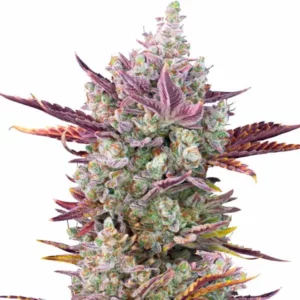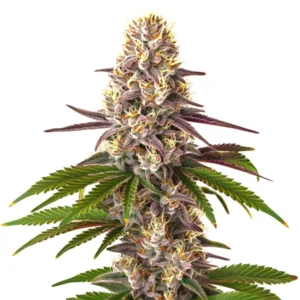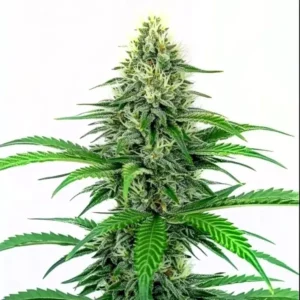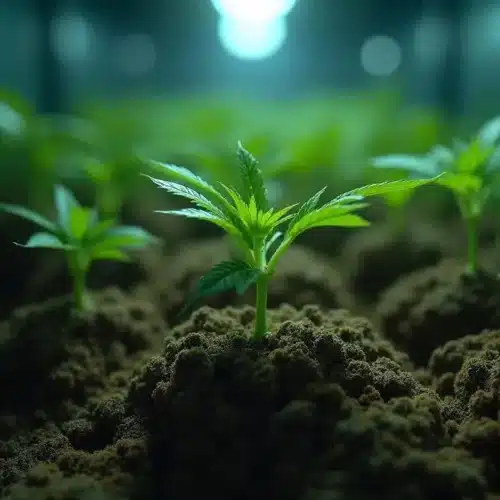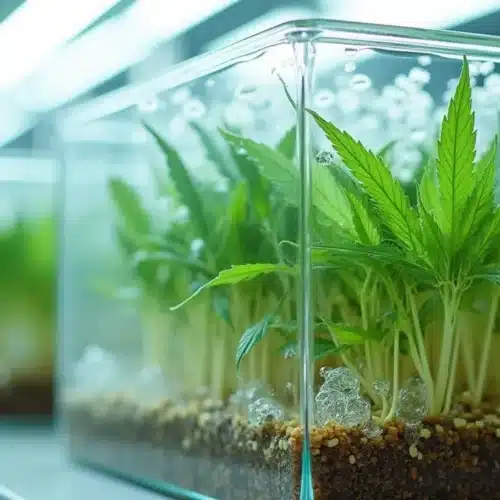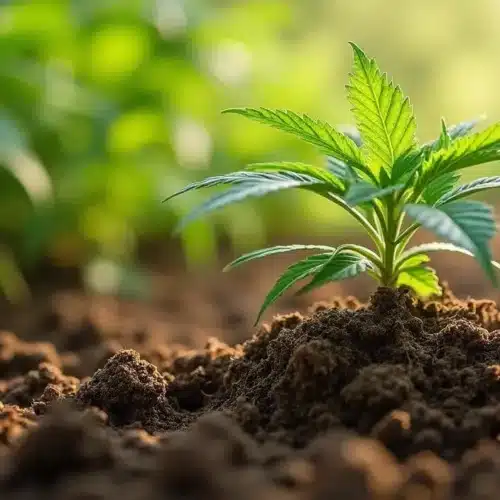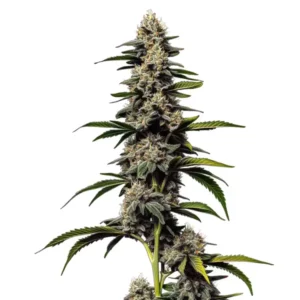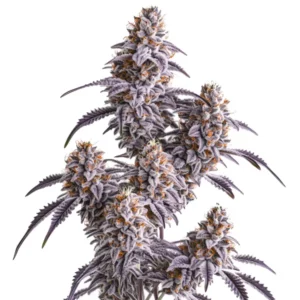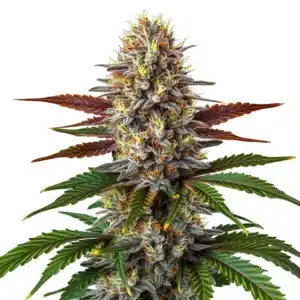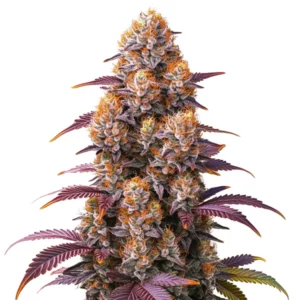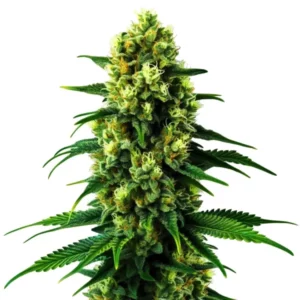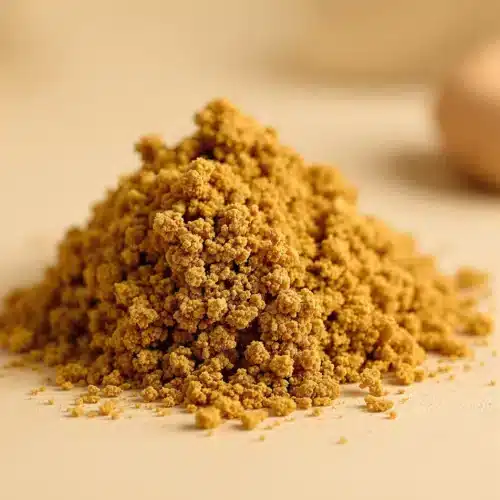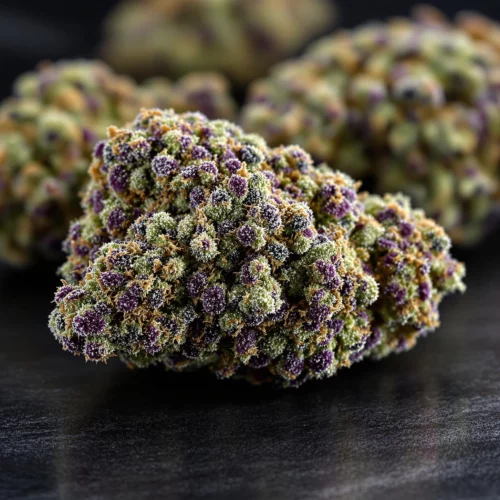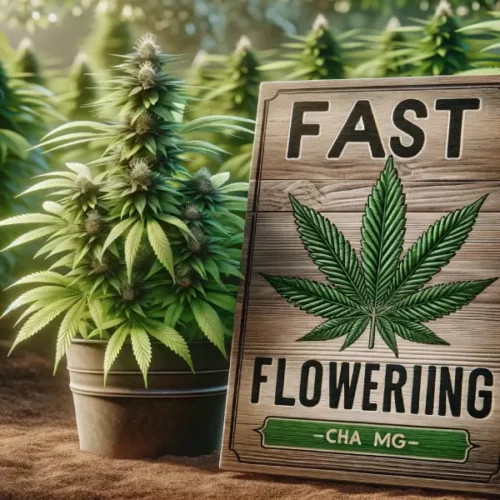In the simplest terms, trimming weed with scissors involves the removal of non-psychoactive parts of the cannabis plant, primarily the leaves surrounding the flower or bud. But why is trimming necessary? The answer lies in the quality of your final product. Trimmed buds are not only more visually appealing but also provide a smoother, more flavorful smoke. In contrast, untrimmed buds can be harsh and less potent, which is not ideal for most consumers.
Determining When to Trim Cannabis
Timing is crucial for cannabis trimming to ensure optimal results. Some growers even base timing decisions on leaf count, which raises the common question: how many leaves on weed should you expect before trimming? Typically, cultivators trim their plants post-harvest. The trimming technique used depends on whether the primary goal is flower production or obtaining trim (leaves).
Speyblade Defoliation Technique:
To enhance trichome growth on flowers and maximize resin production, consider using the Speyblade Defoliation technique. This is particularly useful if you’re managing a cannabis plant with 3 leaves, as early defoliation helps redirect energy to healthy branches. This method involves removing fan leaves at various growth stages without stressing the plants.
Sugar Leaf Visualization Technique:
Another favored method is the Sugar Leaf Visualization Technique. Some growers prefer to wait until the drying and curing process is complete before removing foliage, allowing them to target specific areas for desired outcomes.

Promos & Deals
Cannabis Trimming Techniques for Scissors
Now that you have everything prepared, let’s explore the various trimming techniques for cannabis trimming scissors.
- Wet Trimming: This technique involves trimming weed with scissors right after harvesting while it is still wet. Wet trimming requires careful attention as the wet leaves tend to stick together. However, it offers advantages such as preserving terpenes and reducing the overall drying time.
- Dry Trimming: Alternatively, you can opt to trim weed with scissors after the flowers have been partially dried. Dry leaves are easier to handle and trim, though you should be cautious, as this method may result in some loss of trichomes due to the manipulation involved.
- Hybrid Trimming: Another effective approach is to combine both wet and dry techniques when learning how to trim weed with scissors. Start by removing the fan leaves immediately after harvest (wet trim) and then perform further refinement at a later stage (dry trim).
Why Cannabis Trimming Scissors Are a Game Changer
Precision and Control
- Detailed Work: Knowing how to trim weed with scissors allows for precise cuts, which is crucial for maintaining the integrity and quality of the buds. This precision ensures that only the excess leaves and stems are removed, preserving the valuable trichomes that contain the plant’s cannabinoids and terpenes.
- Hand Control: The ergonomic design of trimming scissors provides better control, reducing hand fatigue during long trimming sessions and enabling more accurate cuts.
Efficiency and Speed
- Faster Trimming: Compared to using regular scissors or hand-picking leaves, specialized cannabis trimming scissors are designed to speed up the trimming process. Their sharp blades and comfortable grip make it easier to trim larger quantities of cannabis in less time.
- Reduced Downtime: With the right tools, trimmers can work more efficiently without needing frequent breaks, increasing overall productivity.
Maintaining Quality
- Preservation of Trichomes: Trimming scissors help in preserving the trichomes, which are vital for the plant’s potency, flavor, and aroma. Careful trimming ensures that these delicate structures are not damaged, maintaining the overall quality of the cannabis.
- Consistent Appearance: Using trimming scissors ensures that all buds have a uniform appearance, which is essential for marketability. Well-trimmed buds are more appealing to consumers and can command higher prices. It’s also important to distinguish between true cannabis and a five leaf plant that looks like weed, as visual similarities can confuse novice growers.
Ergonomics and Comfort
- Ergonomic Design: Many cannabis trimming scissors are ergonomically designed to fit comfortably in the hand, reducing strain and discomfort. This is particularly important for professional trimmers who spend extended periods working.
- Reduced Hand Fatigue: High-quality trimming scissors often feature spring-loaded mechanisms and soft grips, which reduce hand fatigue and make the trimming process less taxing on the hands and wrists.
Versatility and Durability
- Versatile Use: Trimming scissors can be used for various stages of the cannabis plant’s lifecycle, from trimming during the vegetative stage to manicuring buds during the flowering stage. Their versatility makes them an essential tool for any grower or trimmer.
- Long-lasting Tools: High-quality trimming scissors are made from durable materials such as stainless steel, ensuring they stay sharp and effective over time. Investing in a good pair of trimming scissors means they will last longer and provide consistent performance.
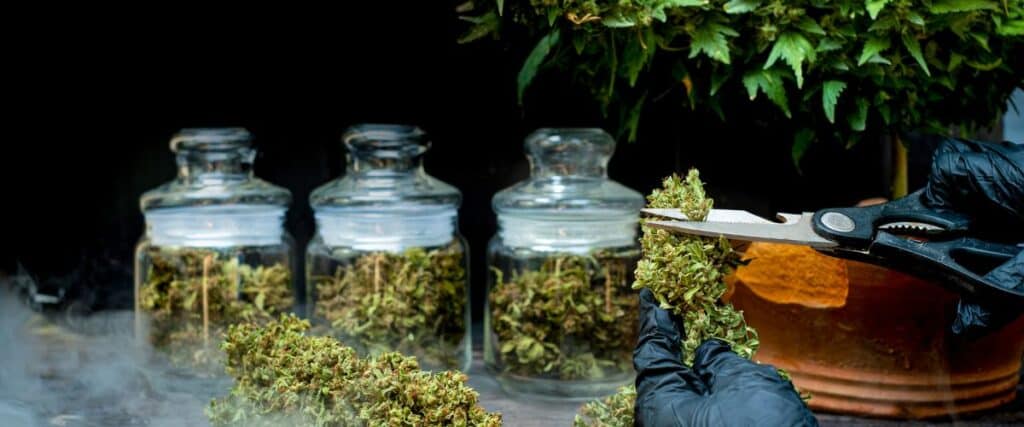
What are the Different Types of Trimming Scissors?
There are various types of trimming scissors available, each suited to different stages of the harvest and personal preferences.
- Pruning Shears: These have strong, thick blades ideal for chopping down large stalks to dry. Some growers use pruning shears to cut down entire stalks, while others prefer to use them for smaller branches, which are then placed in a hanging basket to dry.
- Micro Tip Trimming Scissors: These scissors have needle-like points perfect for reaching into the small crevices of the bud. They allow you to trim away as much leaf as possible without damaging the bud itself.
- Curved Blade Trimming Scissors: Similar to micro tip scissors, curved blade scissors are designed to reach around buds, enabling you to trim even the smallest leaves with precision.
- Spring Loaded Scissors: These scissors are designed for comfort. A spring in the handle reduces the effort needed to open and close the scissors, allowing you to trim buds with minimal finger movement and effort.
- Non-Stick Bud Scissors: Trimming bud can be messy, but these scissors feature a Teflon coating on the blades to prevent sticky trichomes from adhering to the surface, ensuring a cleaner trim and less residue left behind.
Tips for Using Cannabis Trimming Scissors
Some of these tips are common sense, while others will actively assist you during the harvest.
Oil the Blades
You might have used this trick around your house, from door hinges to bolt heads in your DIY projects. Metal needs oil because it acts as a protective layer and lubricant for your blades. The oil helps prevent rust, which can occur if you forget to dry your scissors properly after cleaning them with water. It also ensures smoother cuts, making your harvesting process easier.
Alternate Trimming Scissors
This is an age-old trick. How can you prevent one pair of scissors from getting too sticky? Simple: use multiple pairs. This is particularly useful for large harvests or different strains. A few extra shears can significantly speed up the final step of your growing operation, especially if you leave them to rest in a cup of rubbing alcohol between uses (more on this later).
Scrape Off Excess Resin
You might think sticky trimming scissors are a bad thing, but actually, sticky blades mean resin, and resin means cannabinoids. Instead of dreading the cleaning process, consider it an opportunity to sample your product before curing your buds. Use a sharp blade or scalpel to scrape off the resin before soaking your scissors in rubbing alcohol. This “scissor hash” can be enjoyed fresh or dried and saved for later.
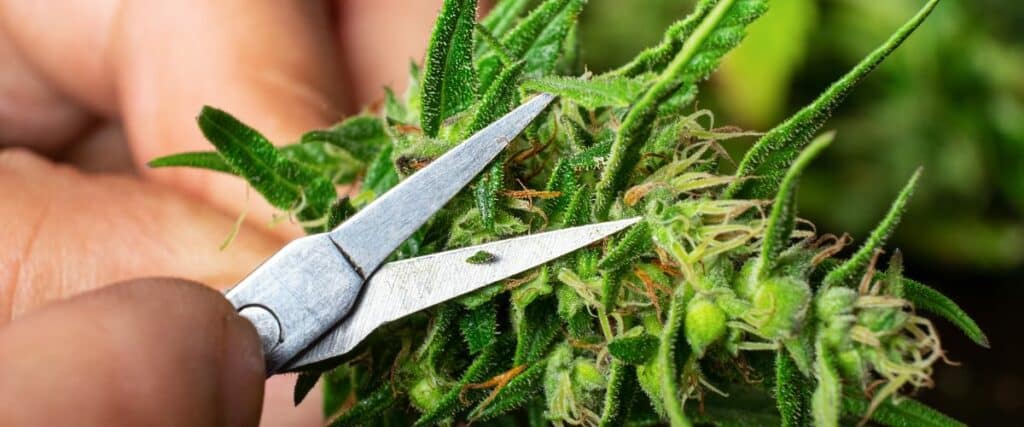
How to Maintain Clean Cannabis Trimming Scissors
Rubbing Alcohol
Nothing cleans and disinfects better than high-grade alcohol. The best method is to scrape off the resin and then immerse the scissors in a cup of rubbing alcohol—ensure the blades are fully submerged. We recommend letting them soak for 15 to 30 minutes, which is why having multiple pairs of shears is advantageous. This is the most time-effective way to clean your cannabis trimming scissors. Once soaked, remove the scissors and wipe them clean with a towel.
Citrus Remover or Fruit Peel
If alcohol isn’t suitable for you or is hard to obtain, a homemade solution might be your best bet. For the citrus remover, mix equal parts baking soda and coconut oil in a bowl, then add natural citrus oil. Use a cotton ball or cloth to gently clean the scissors. Alternatively, you can use fresh citrus peel; the citrus oil in the peel helps remove the resin. Simply rub the blades with the peel or use a cloth.
White Vinegar
White vinegar is a common household item and an excellent cleaner. Like with alcohol, soak your scissors in a cup of vinegar and then wipe off the residue with a cloth or towel. Since vinegar is less potent than rubbing alcohol, you might need to repeat the process.
Freeze Your Trimming Scissors
While not a cleaning method per se, freezing your scissors can make any of the above cleaning methods easier. Freezing helps compact the resin and lift it slightly from the blade, making it easier to scrape off once frozen.
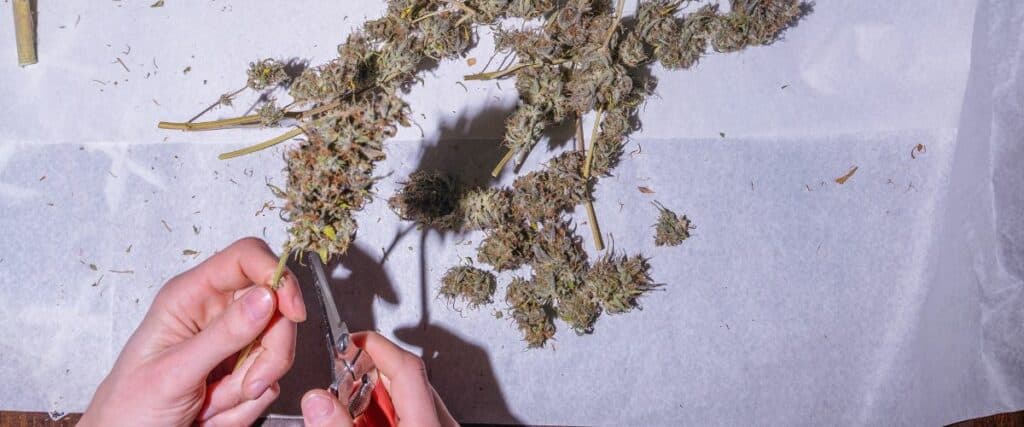
Post-Trimming Care for Cannabis Trimming Scissors
After completing the cannabis trimming process, follow these steps to ensure proper post-trimming care:
- Curing: Place the trimmed buds into airtight containers, such as glass jars, maintaining around 60% humidity. This creates ideal conditions for the curing process. Remember to periodically open the jars for oxygen exchange, which enhances flavors and aromas while reducing moisture.
- Storage: For long-term preservation without compromising quality, store your cannabis in low-humidity environments and avoid exposure to sunlight.

